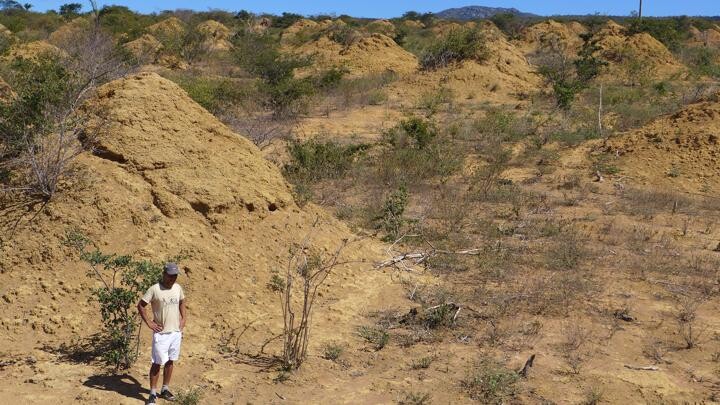
In the Caatinga forest in the northeastern part of Brazil, approximately 200 million cone-shaped mounds, each about 8 feet tall and about 30 feet wide, spring up from the earth, evenly spaced and equal in size and easily visible from space.
The termites responsible for creating the mounds have been excavating the land, building tunnels underground by depositing soil at the surface, slowly building a network of mini pyramids over nearly 89,000 square miles.
And they’ve been at it for nearly 4,000 years, reports a new study co-authored by Nebraska’s Paul Hanson.
To date the mounds, the researchers collected soil from the centers of 11 mounds and shipped it to Nebraska, where Hanson, professor with the Conservation and Survey Division at the School of Natural Resources, tested it to see when the soil grains were last exposed to sunlight. It’s a dating technique few labs have the capability to do.

“I was surprised that there is a good amount of variability in the ages coming from these mound fills,” the oldest of which is 3,820 years old and the youngest of which is 690, he said. “That could mean a number of different things, but maybe most obviously that mounds were built during different time periods over the past 4,000 years.”
The mounds were largely hidden from view in the deciduous, semi-arid Caatinga forests until lands were cleared in recent decades to provide pastureland. The researchers intended to discover whether the strangely regular spatial pattern of mounds was driven by competition among termites. But they found termites at mounds close to one another didn’t swarm and attack each other, whereas at mounds farther than 30 miles apart, attack was swift.
The findings lead the researchers to believe that the mound pattern has occurred through self-organizational processes meant to provide the termites a safe space and access to dead leaves directly from the forest floor.
There is still a lot the researchers don’t know. For instance, no one knows how the termite colonies are physically structured because a queen chamber has never been found, and they don’t know how the mounds, which have no tunneling network inside, are actually built. Do the termites carry the soil through sunlight before depositing it on a mound? Do they build one mound and then another, or do they work on all mounds at the same time? And finally, does a mound fall “silent” when one colony of termites dies, only to be picked up by another generation hundreds of years later?
“We’ve just started cracking the surface on this,” Hanson said. “We’ve only dated 11 mounds from an extremely large field, so we hope to add more ages to the mix to see if different portions of the mound field were formed during different time periods.
“If we take multiple samples from the inside of individual mounds, we may be able to see how they grew and changed over time.”
The team reported its findings in the journal Current Biology. The research team included Stephen Martin, professor at the University of Salford, United Kingdom; Roy Funch, ecologist with the Universidade Estadual de Feira de Santana in Brazil; and Eun-Hye Yoo, associate professor at the University at Buffalo in New York.







